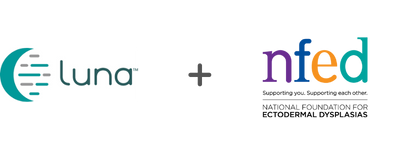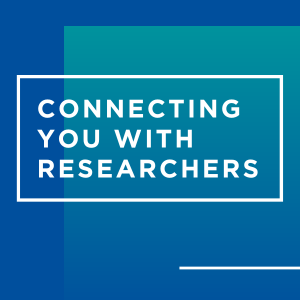The National Foundation for Ectodermal Dysplasias (NFED) will soon launch a new patient registry for ectodermal dysplasias in collaboration with Genetic Alliance and LunaPBC. It will be a single repository to collect information for the 60+ types of ectodermal dysplasia.

A patient registry is an online, secure database that tracks data provided by you— individuals affected by ectodermal dysplasias. But it’s not just a simple database. It’s a platform with robust features that enable the NFED to better connect the ectodermal dysplasias community with care providers and researchers around the world.
If you have been with the NFED for a while, you may be thinking, “Doesn’t the foundation already have an ectodermal dysplasias registry?” And you are right, we did. We launched the first registry back in 2010 and had success with it. For example, Edimer Pharmaceuticals used the data from the registry to assess how x-linked hypohidrotic ectodermal dysplasia (XLHED) progresses over time in affected individuals. They analyzed the registry data reported for XLHED by our families and published their findings in the American Journal of Medical Genetics in 2014.
Their results were based on the largest collection of data ever documented on a broad spectrum of health-related issues affecting individuals with ectodermal dysplasia! That entire data set came from our registry. This information helped them execute the Newborn Clinical Trial for XLHED, which was the first clinical trial in the development of ER004 as a potential treatment for affected boys. It’s just one instance of how important a registry is!
Why Now?
So why are we launching a new patient registry? Technology has advanced in the last decade and the new platform has improved functionality. The new registry platform offers greater benefits for you, the patient, researchers and care providers who can access it, and us as a foundation, hosting it.
The best part is that the new registry will be easier for you to use. When it launches, we will ask you to register each individual in your household who is affected by ectodermal dysplasia. This will be simple to do and will not take you long.
After you create your profile, you can return to the registry at any time to add information or make changes. For example, if you get genetic test results confirming your diagnosis, you can upload those results to the registry. Or, if your affected child starts having different symptoms as they go through puberty, you can update the registry with that information.
You have the choice to share your medical records. But all of it will be useful to help us learn. The information belongs to you—you can view download or delete your data at any time.
The new platform enables researchers to look at de-identified data. This means they will not be able to associate your name and contact information with the information you provide unless you grant permission to do so. The NFED strongly values the privacy of your information. We chose the Luna platform because it follows the highest privacy and security standards.
How the Ectodermal Dysplasias Registry Benefits Researchers
Researchers can search the data to see what exists to inform their theories or studies. They can also use it to ask for input. Throughout the years, surveys have played a key role in our research program. We’re excited that the new platform makes it easier for approved researchers to survey individuals about their experience living with ectodermal dysplasias. The Genetic Alliance Internal Review Board will evaluate all research proposals to ensure the quality and appropriateness of the study.
We thank you, our families, for 40+ years of research success because you were willing to step forward and help. Soon, we will invite you to do it again by enrolling in the new and improved patient registry. Your willingness to tell us about how ectodermal dysplasia affects you will help expedite research to develop better treatments. It’s true that knowledge is power. Thank you in advance, for sharing yours.

Fantastic!!!
I’m trying to help my 43 year old daughter who has developed fingernail problems. No me knows how to treat this. She is a third generation Incontinentia Pigmenta. My father carried the gene.
Was born with it
then my daughter Rachel and amber were born with it
now two of my granddaughters have.
Can you help me find the right treatment for this eruption.
Hi, Debra! We do offer some resources on our website for managing nail issues associated with ectodermal dysplasia, which you can view here: https://nfed.org/learn/symptoms/nail-abnormalities/. We always recommend seeing your primary care physician and/or a specialist for any concerns your daughter has, as all cases are different and a medical professional can give you the best advice on treatment and management. If you need help finding a doctor close to your daughter, please let us know, and we can see if we know anyone in your area we can recommend. Best of Luck! – Veronica